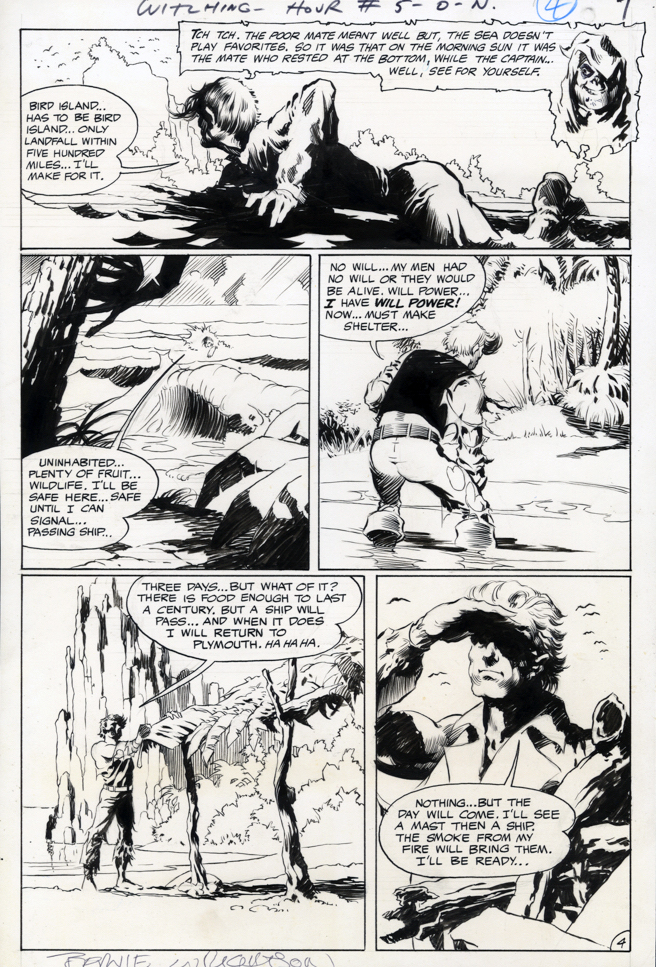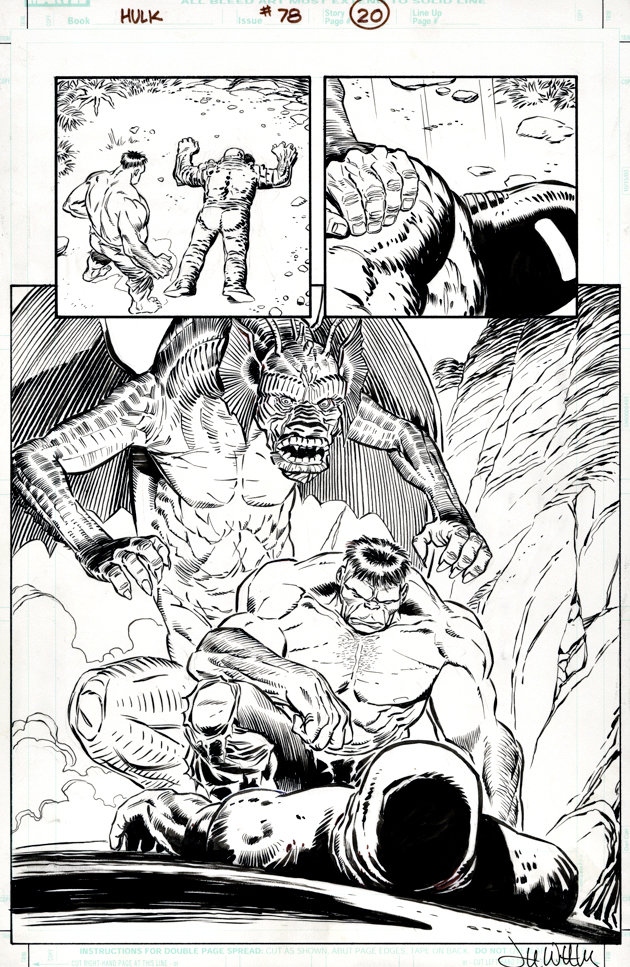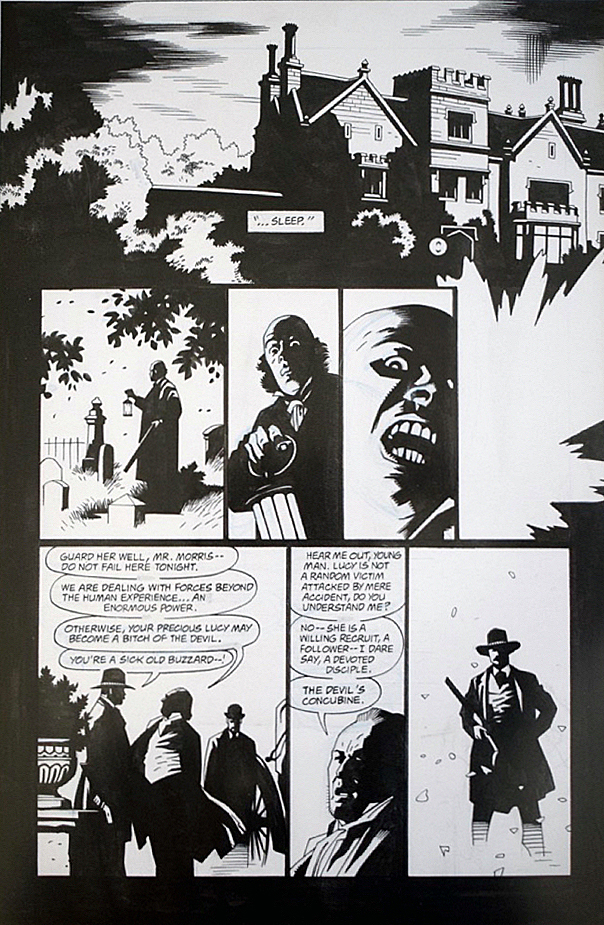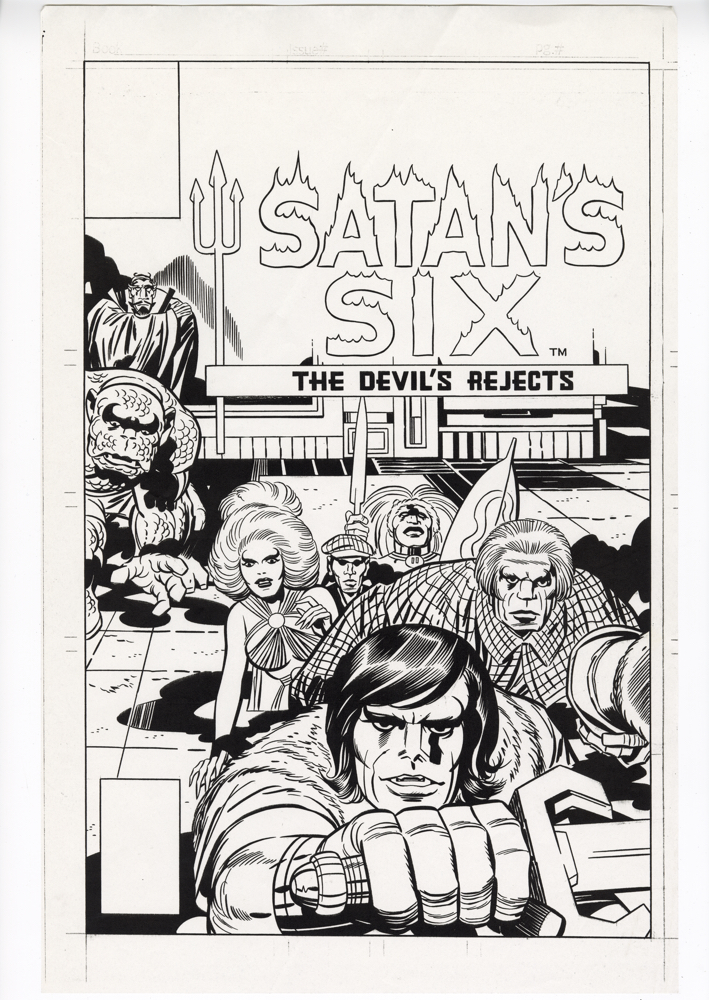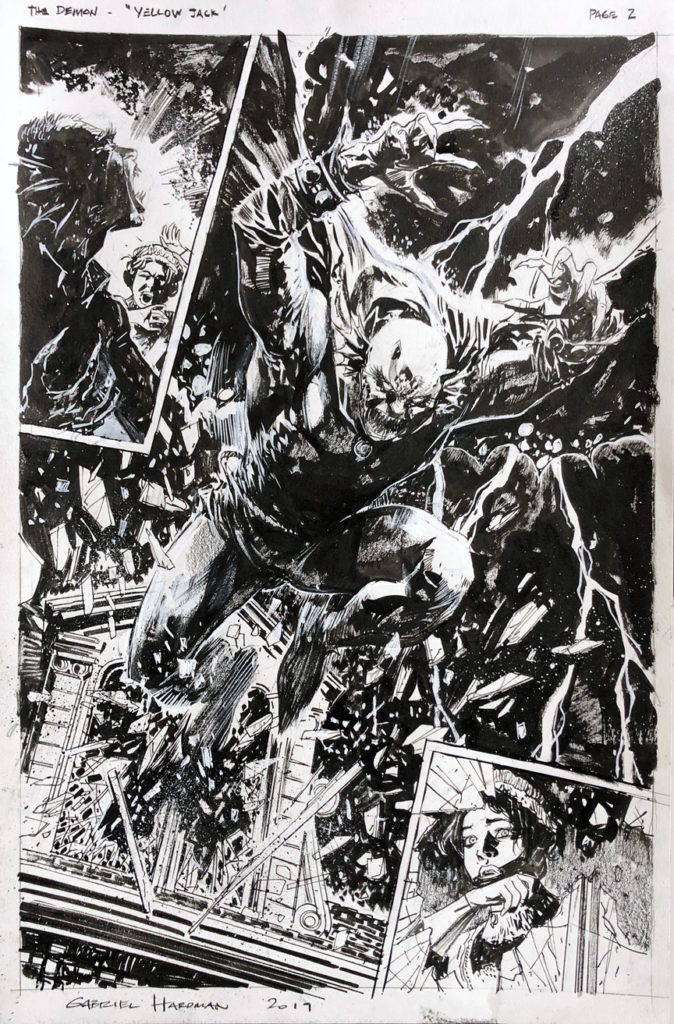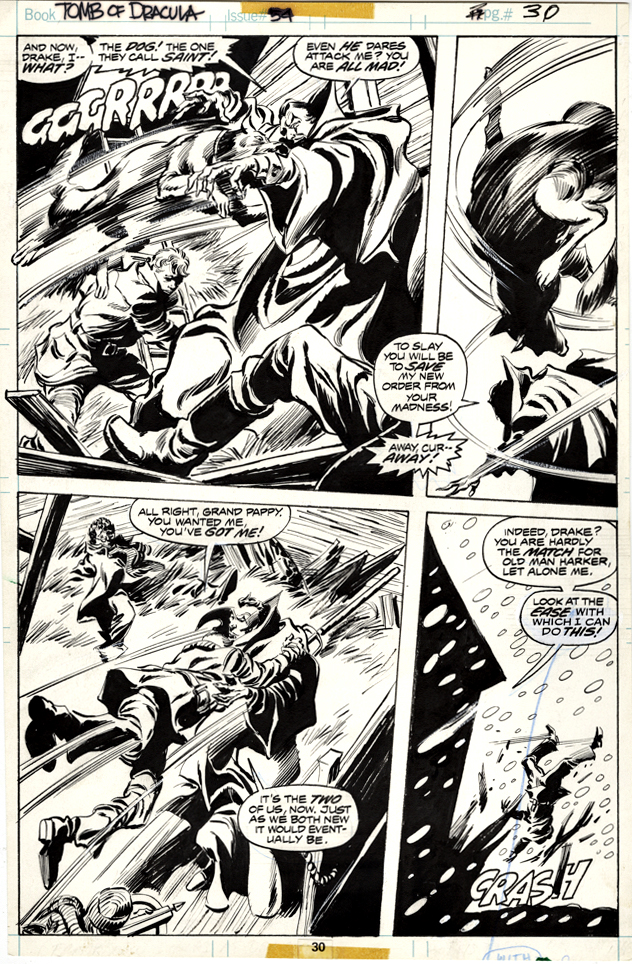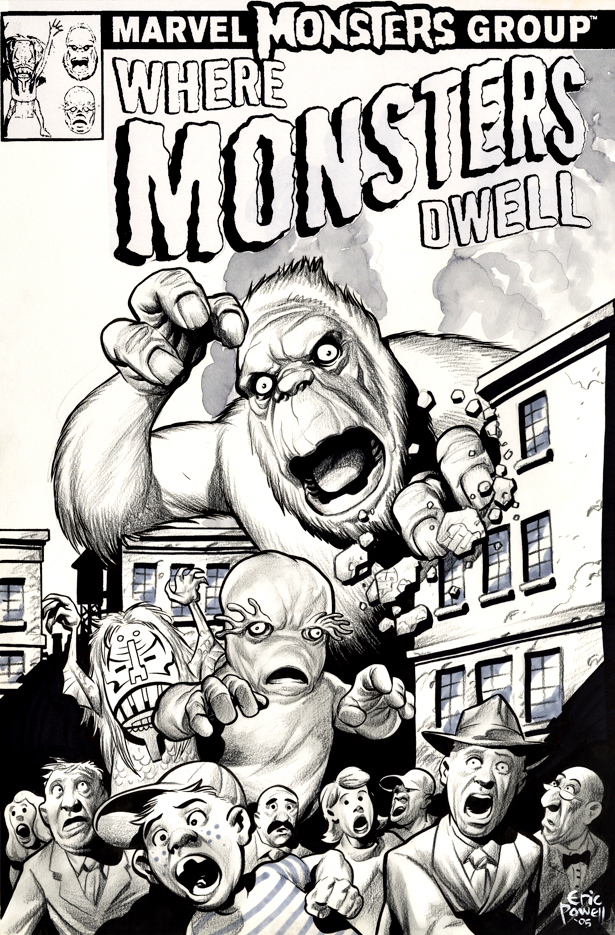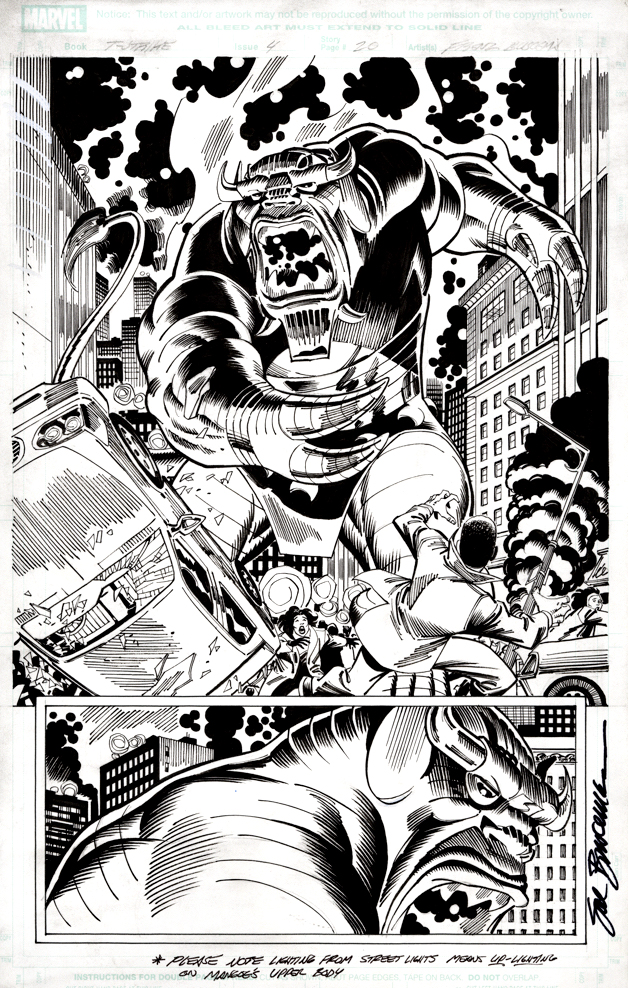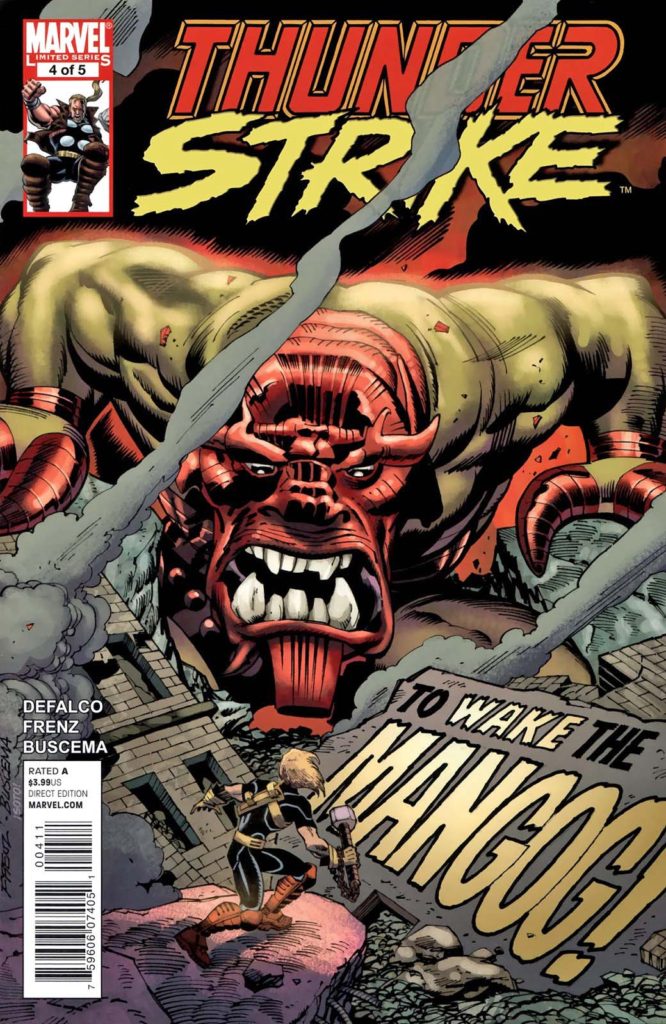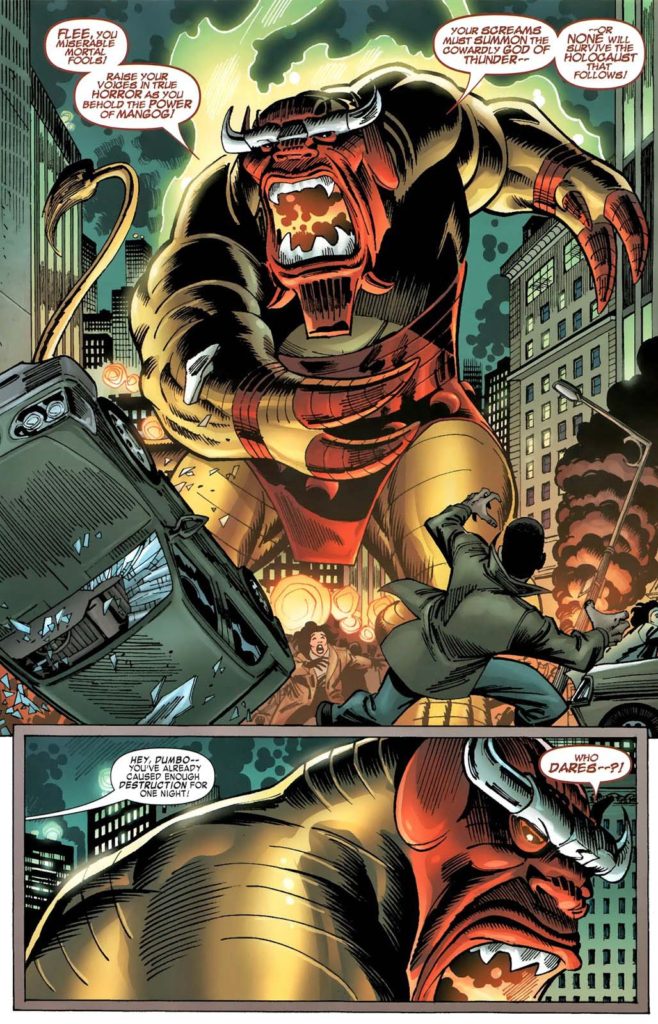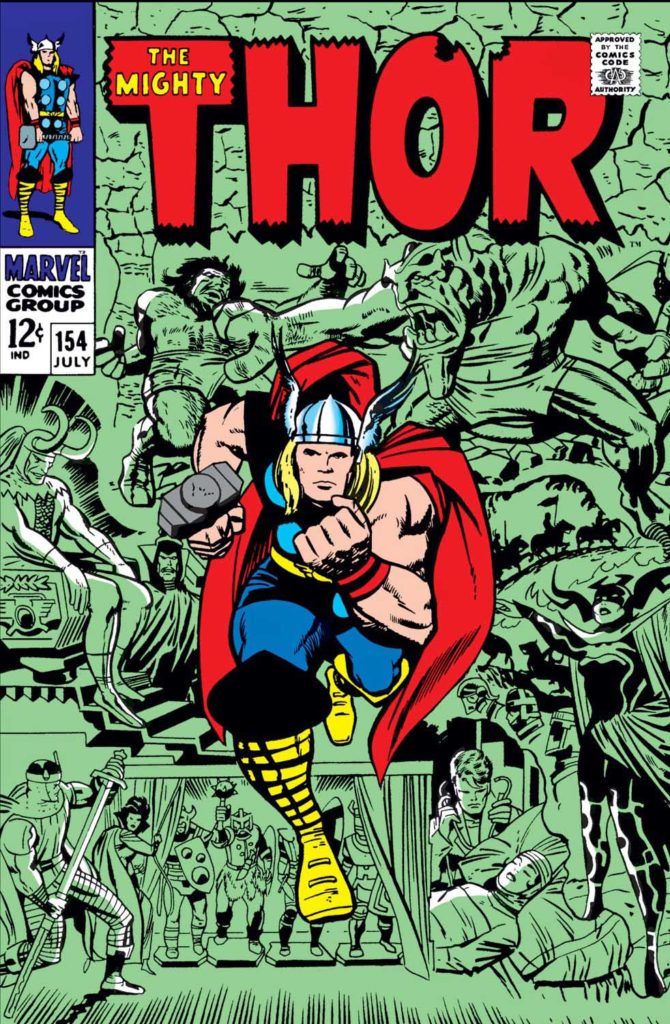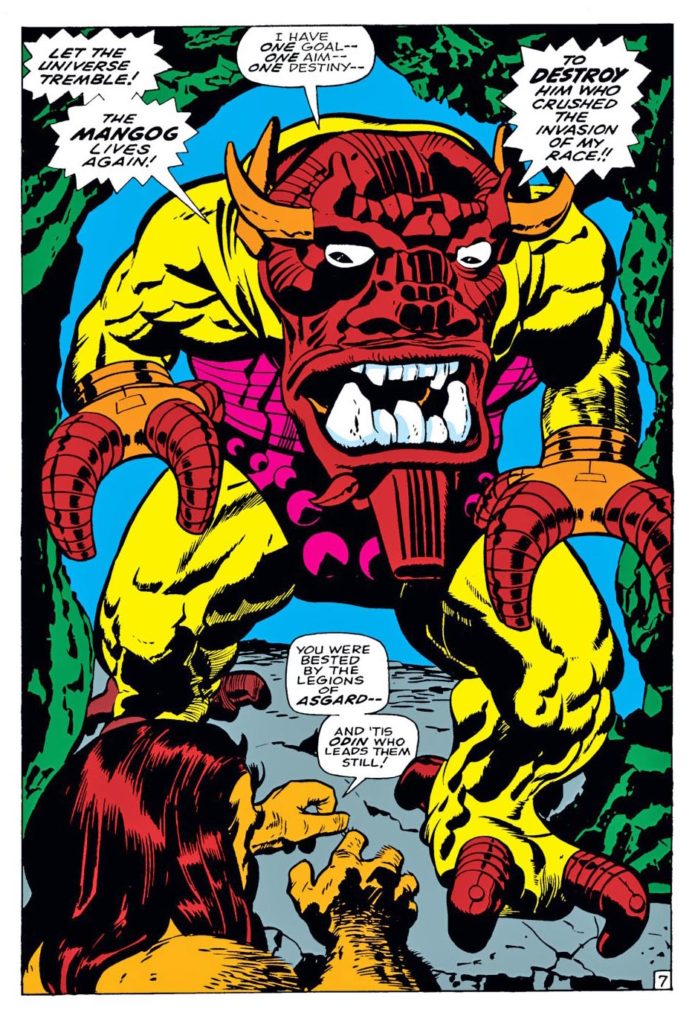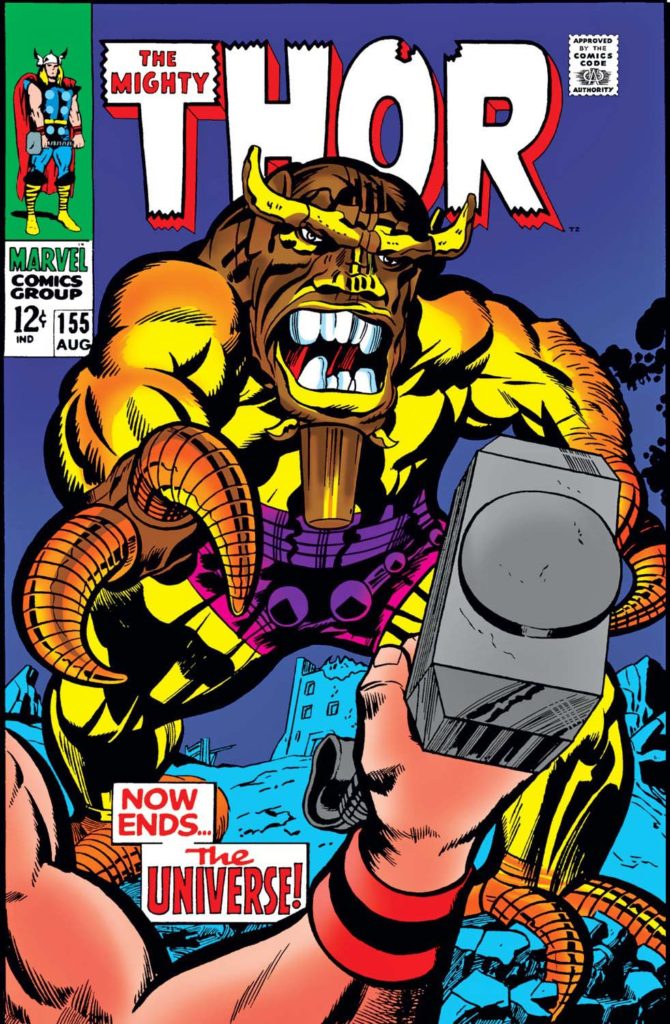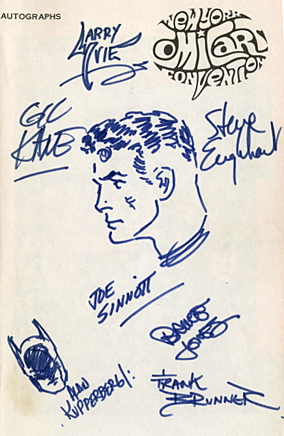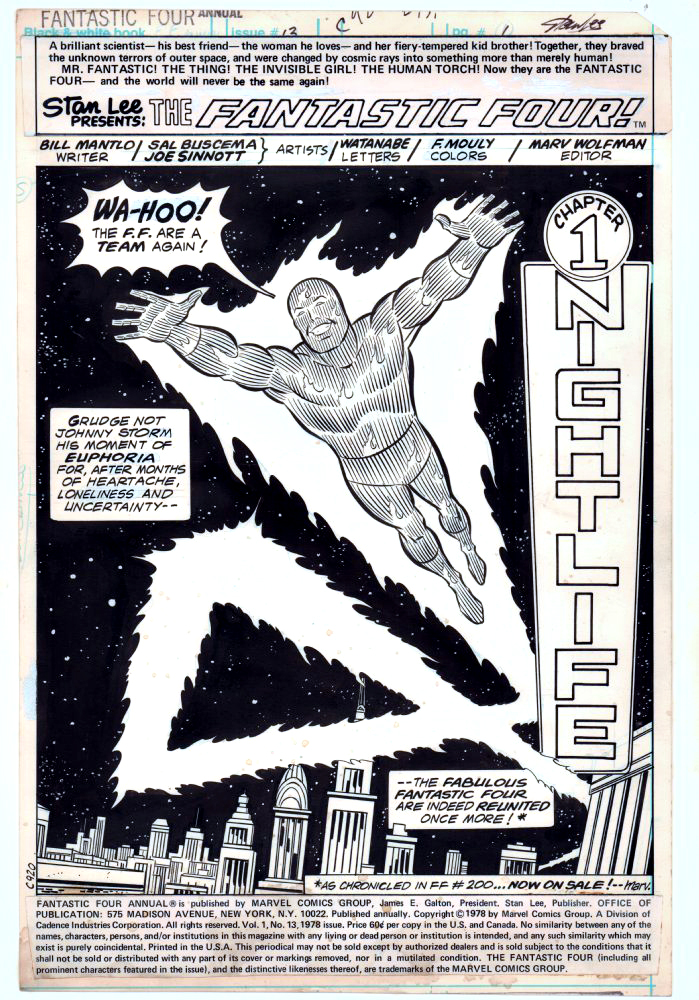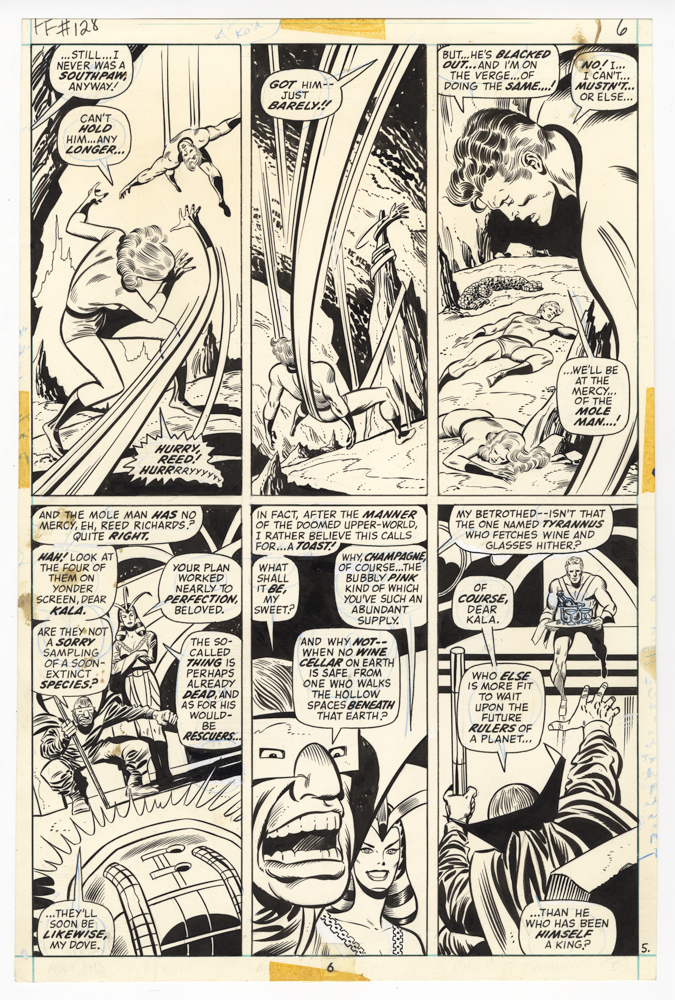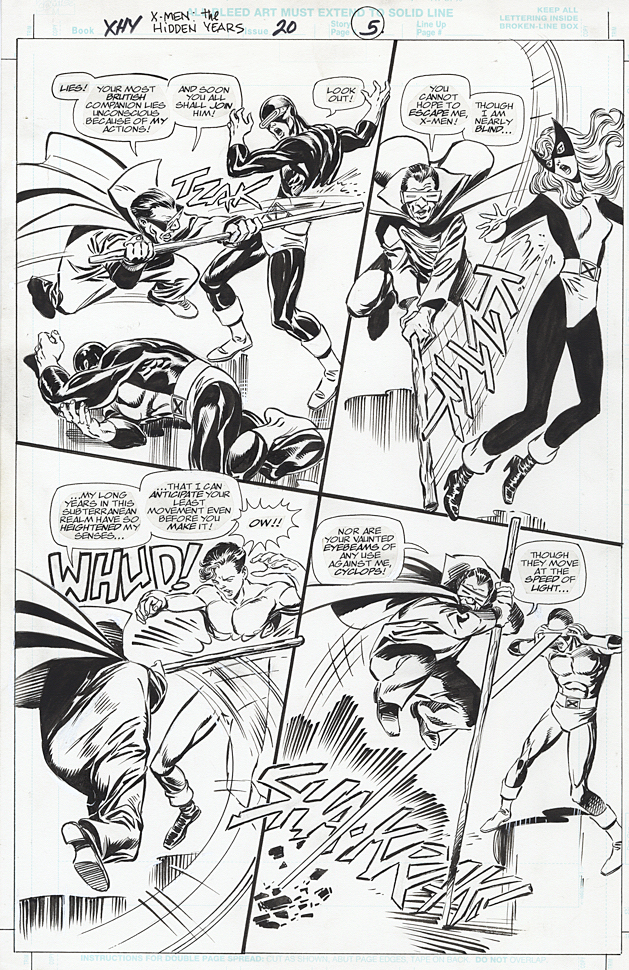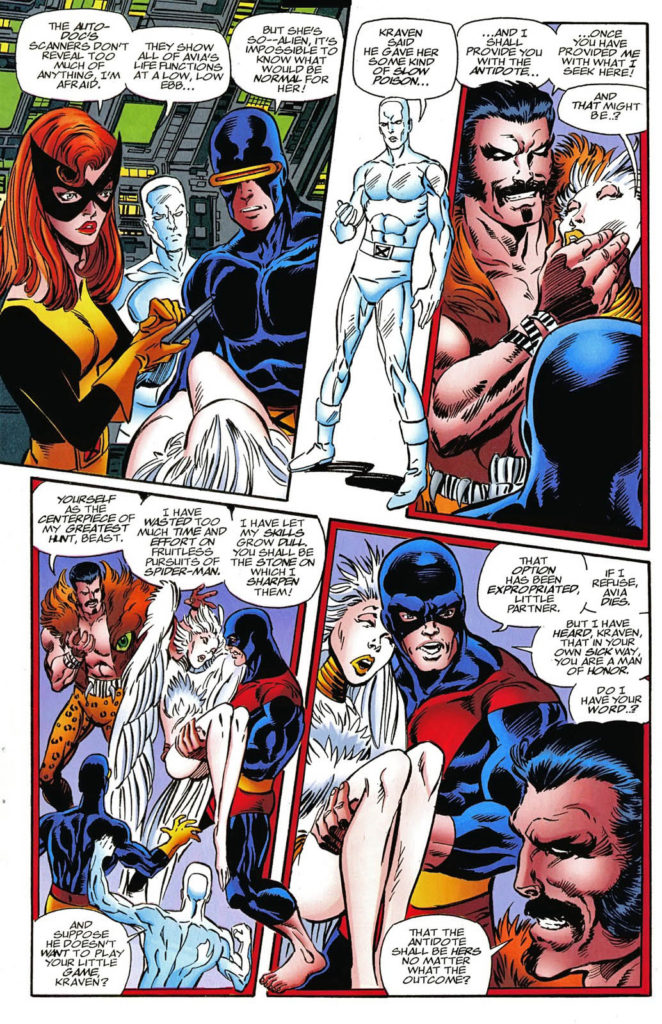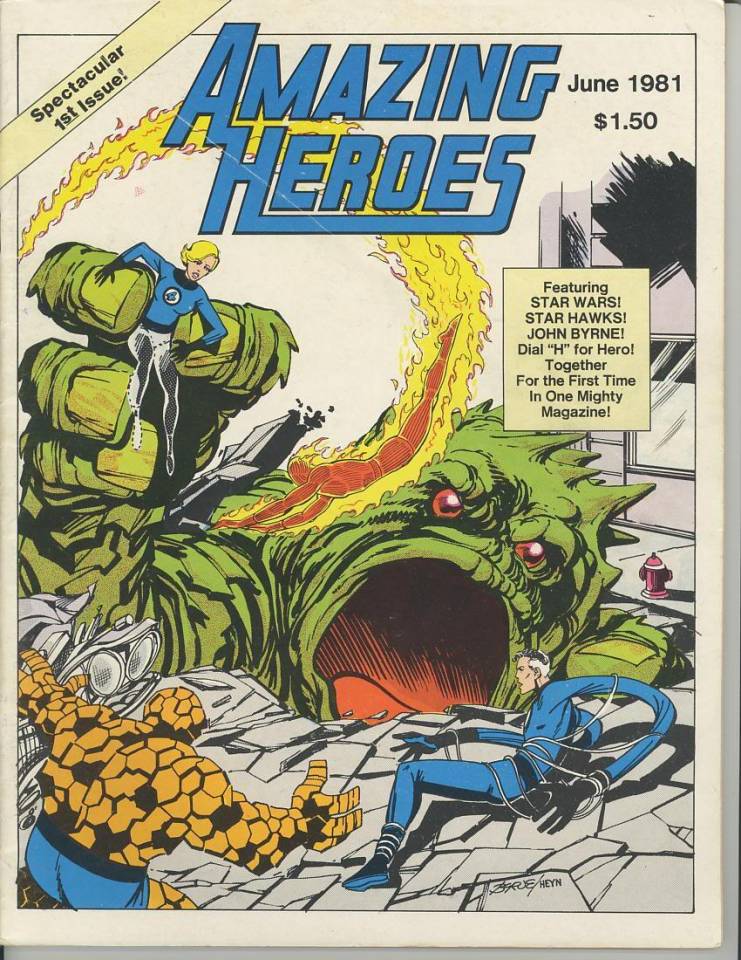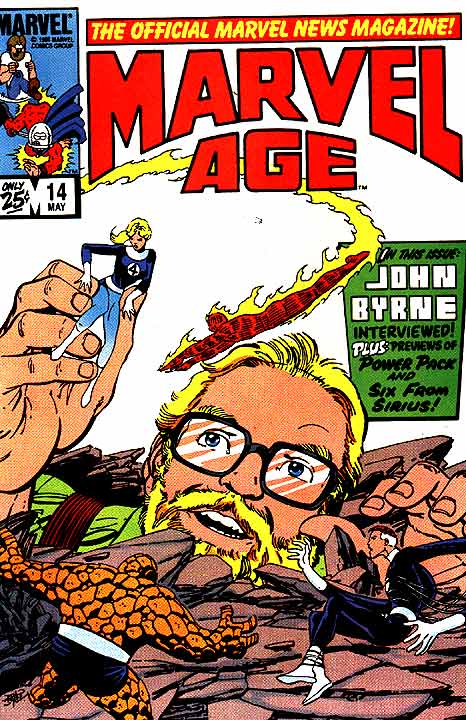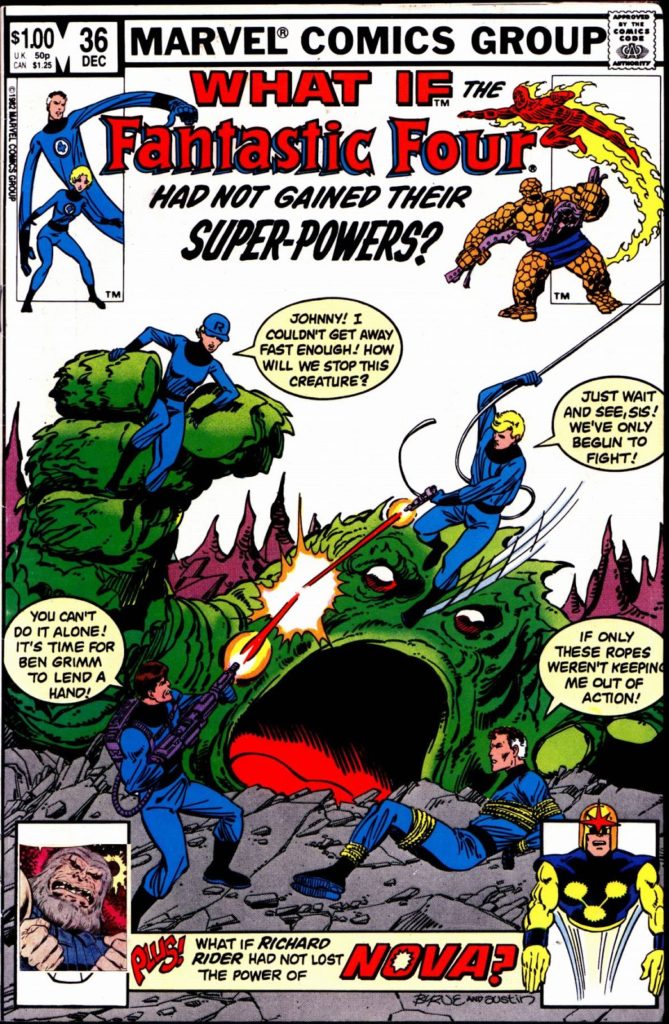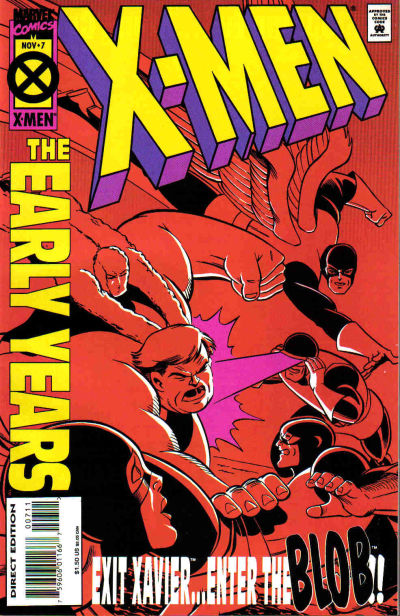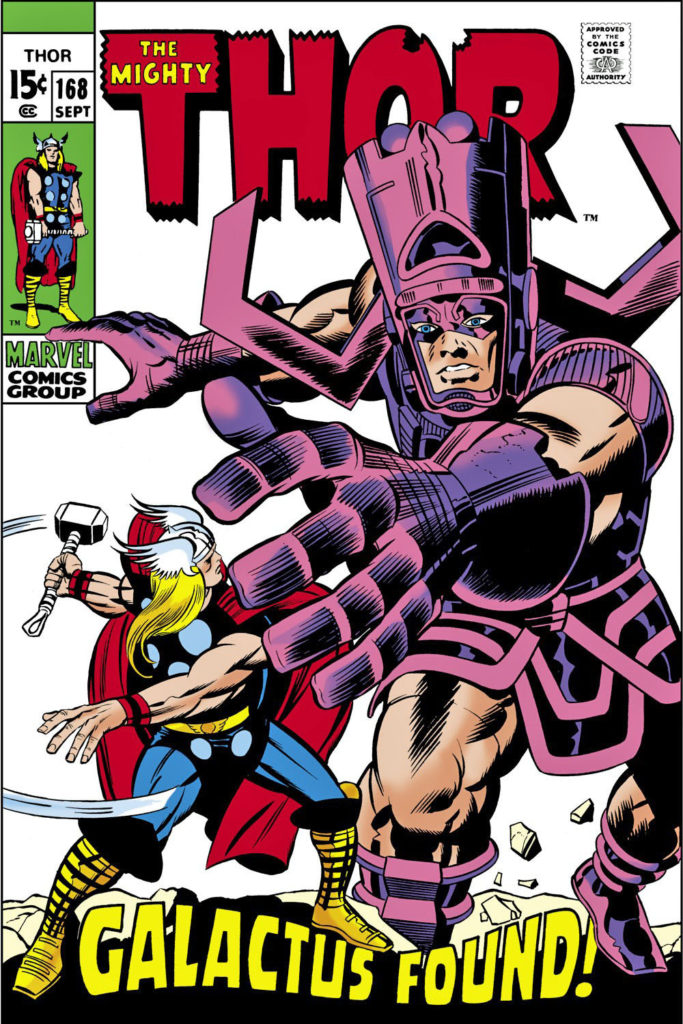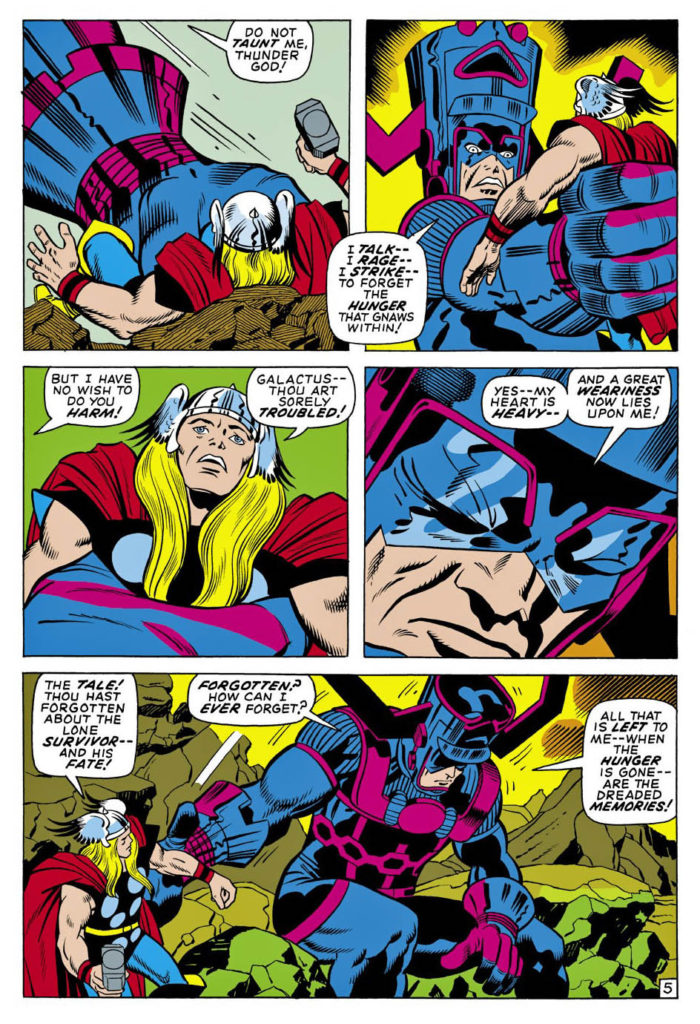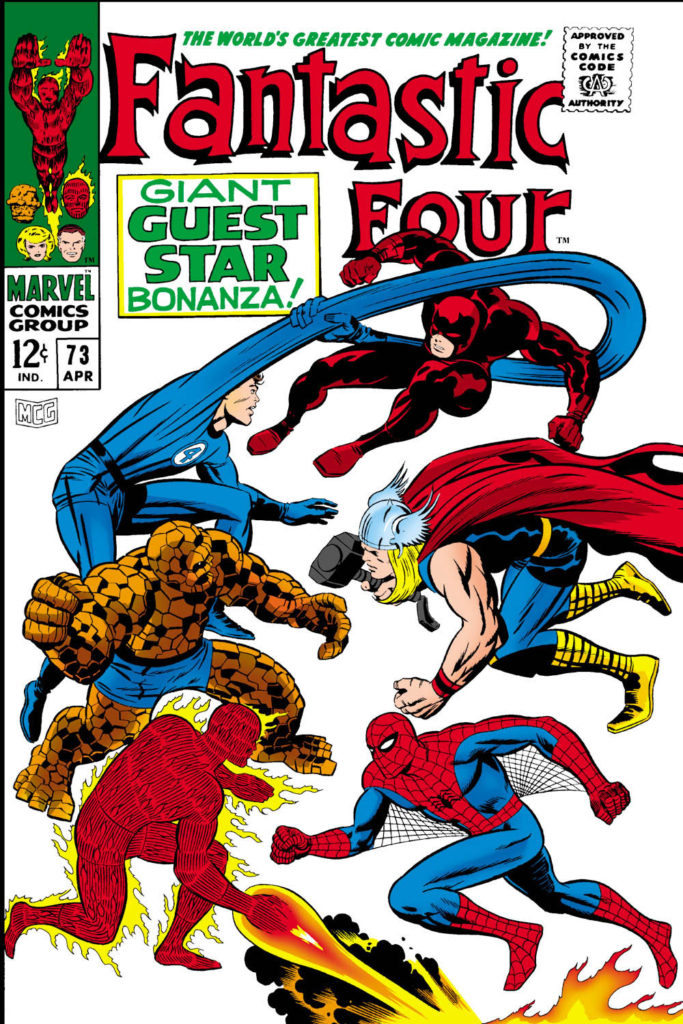Tag: Jack Kirby
Ron Frenz & Sal Buscema — Ragnarok & Roll
Thunderstrike # 4, May 2011
FRenz Kirby etc
Ron Frenz goes full on Jack Kirby (with perhaps a dash of John Buscema) with this wonderful Mangog splash from the second Thunderstrike (Thor — sort of) mini-series.
Just because the “Monster Age” at Marvel ended when the superheroes took over the publishing schedule (early 60s), that didn’t mean that Kirby stopped creating great monsters during the era.
In fact, the monsters had to be fiercer, meaner, and smarter — to provide antagonists worthy of our intrepid heroes.
Take Mangog here. His appearance typically means the end — of everything. Hence, Ragnarok. Stan and Jack introduced him in Thor 154 and 155 back in 1968 and he’s created havoc from time to time ever since.
As for Mr. Frenz? Another great looking effort, with terrific inks by Sal Buscema.
Kirby Crackle included, no extra charge.
Joe Sinnott — 4Ever
Sketch, NYCC Convention Program, 1972
Joe Sinnott, easily one of the greatest comic book inkers of all time, and a terrific person to boot, passed away a few days ago. He was 93.
Joe drew the very first sketch I ever owned (and still do, BTW) in my convention program at my very first NYCC, 1972.
Reed Richards — Mr. Fantastic — was an appropriate choice, because Joe’s legendary inks on both Kirby and then John Buscema (and ultimately others) provided a polished, consistent look for “The World’s Greatest Comic Magazine.”
I own other art inked by him, but this one is extra special.
RIP Joe. Many thanks and salutes from all of us for your astonishing career.
https://greggoldsteincomicartgallery.com/john-buscema-going-underground/
Frank Springer — Death To Fury!
Nick Fury, Agent of S.H.I.E.L.D. #10, March 1969
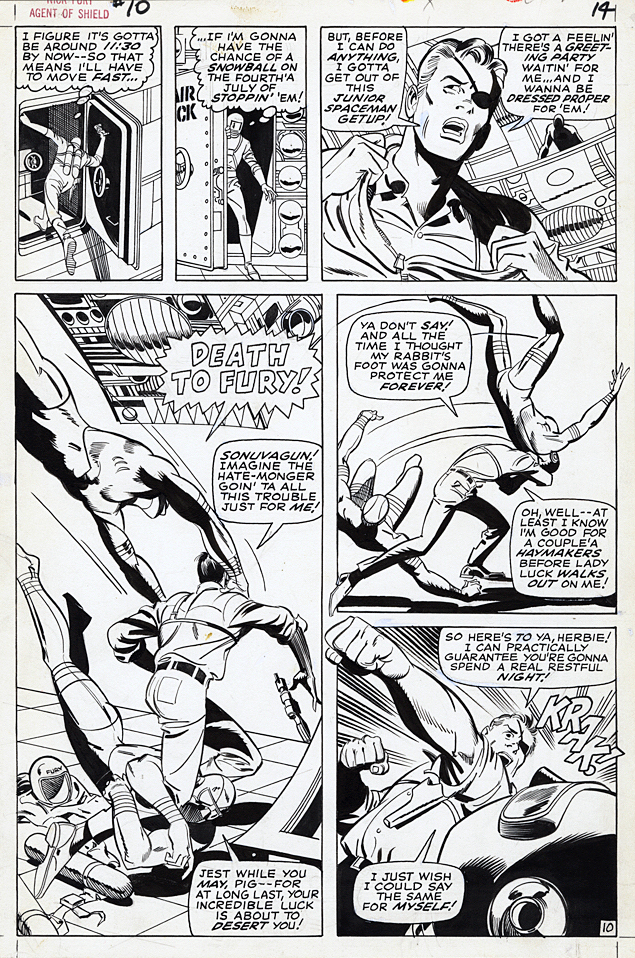
Continuing a look at SHIELD on the eve of its 55th anniversary.
Jim Steranko is not a hard act to follow.
He’s an impossible one.
But on the SHIELD solo series, Frank Springer gave it a try. And in possibly another circumstance, it probably would have been fine.
But, like I said, all of sudden SHIELD transformed into an inadvertent real life version of another spy series: Mission Impossible.
Springer, who broke into Marvel with his work on this series actually captured some of the Steranko vibe in these issues. Barry Smith also managed to capture some it in one issue as well, and even Herb Trimpe had a few cool stories before it became a moot point, and the series died.
In a vacuum, the Springer Fury issues, as exemplified by this page, are well told and illustrative. Clear storytelling and panel variety move us through the action quickly and creatively.
But coming off the Kirby-meets-Krigstein pop-psychedelic acid trip of Steranko’s earlier issues, it wasn’t enough to keep the series going.
But of course, Nick Fury, and SHIELD, lived on.

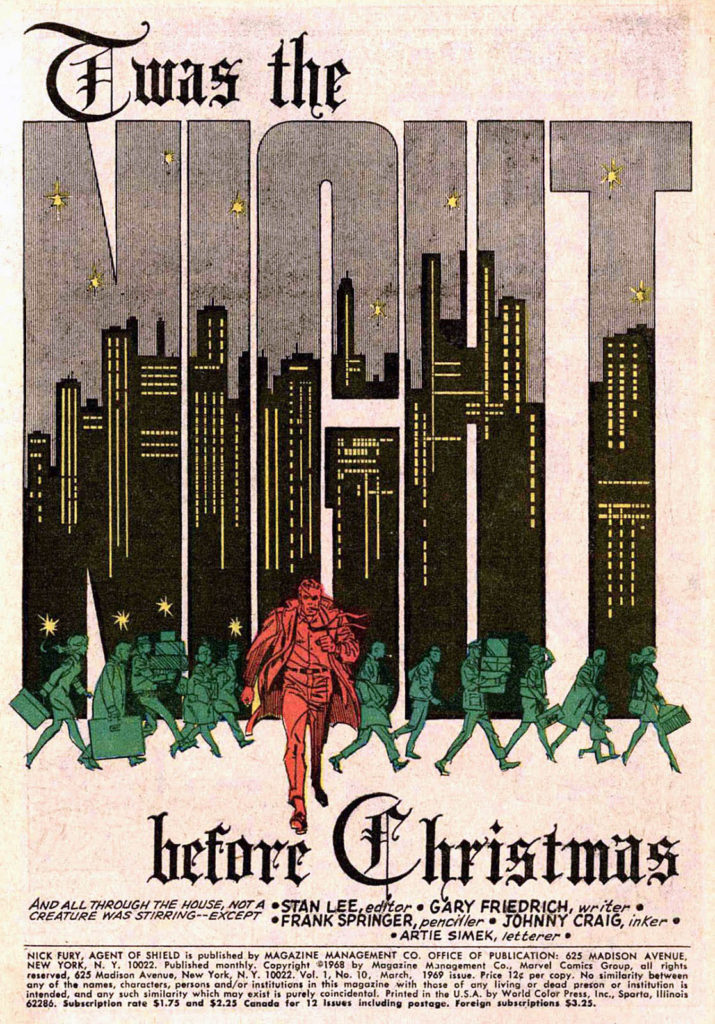
John Romita Jr. — Eternally Yours
Eternals #1, August 2006
By now, we should be in the next phase of the Marvel Cinematic Universe, but unfortunately, we have a six-month delay. So, for the first time in a dozen years, no Marvel film to launch the summer movie-going season. But, we won’t let that delay slow us down here — this week, we’re looking at some comics art related to the next three scheduled films.
Jack Kirby’s Eternals was a natural extension of Jack’s interest and abilities in all things cosmic — Norse Gods, New Gods, et al. In my mind, this series was the most engaging of Jack’s efforts during his brief return to Marvel in the mid 70s.
When Jack left Marvel again in 1978, Eternals went into mothballs and only made a brief reappearance in 1985 (without Kirby) before disappearing again.
Then in 2006, another take, this one, a mini-series (7 issues) by Neil Gaiman and John Romita Jr. appeared. It seemed like an odd team-up — the Vertigo “alternative” star writer, paired with the more “meat and potatoes” (superheroes) star artist. But ultimately, the talents meshed and it’s a well-done series, bringing the Eternals into the “modern” Marvel Universe, with some twists.
If anything did the series a disservice, it was the main covers by Rick Berry. Berry is super talented artist of course, and in a vacuum the covers are wonderful paintings. But they don’t match the stylistic content of the stories. I’m guessing he was hired because the editors wanted the covers’ artistic style to match the established Gaiman “brand” – despite the fact the stories are so much more traditional than Neil’s Sandman work.
Nonetheless, great Romita Artwork is still great Romita artwork, and this splash of Ikaris and Thena (inks by Danny Miki) is one of the best pages in the series. The page (pencils version) was used as the cover for a sketchbook from the series.
Eternals (the movie) is currently (re)scheduled to open February 2021.

John Byrne — Unhidden
X-Men: The Hidden Years # 17, April 2001 & #20, July 2001
John Byrne returned to the X-Men in 1999. Not his beloved X-Men of Wolverine, Storm, Colossus and Phoenix, however. This time it was the “original” X-Men — in the period between their cancellation and rebirth. The “Hidden Years.”
It’s an often overlooked series and shouldn’t be. John brought great energy — and closed some outstanding story loops — in the 22-issue series.
Inks are by the terrific Tom Palmer, which gave the series a classic look, reminiscent of those great original Neal Adams issues, while still keeping it clearly Byrne.
Lots of fun guest appearances in the series as well, including the Fantastic Four — inked in one issue by the legendary Joe Sinnott.
Mike Parobeck — Modern Composition
X-Men: The Early Years #7, November 1994
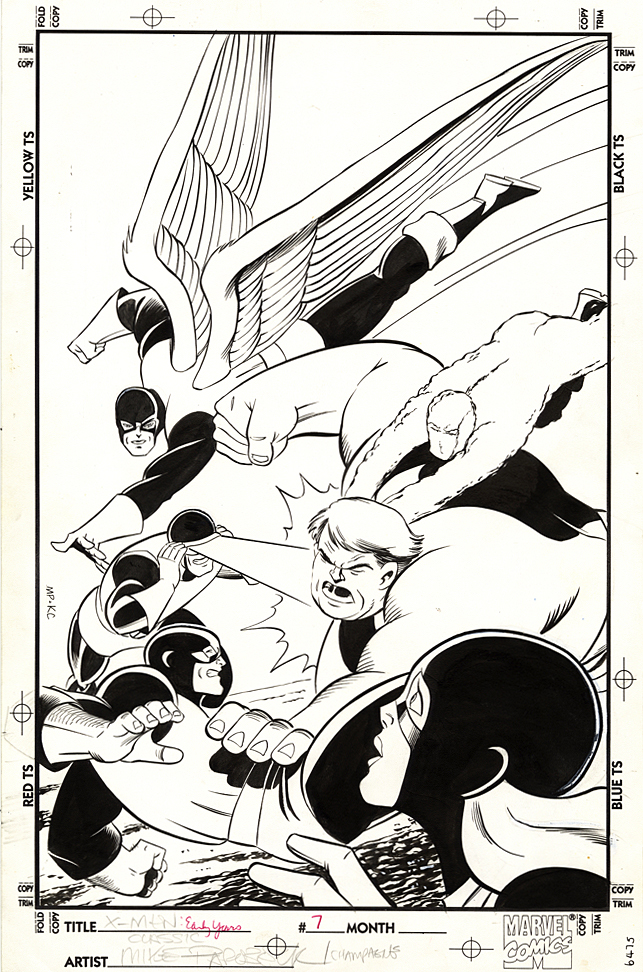
Sometimes the reprint cover is just better.
Case in point, Mike Parobeck’s cover of X-Men: Early Years #7, which reprints the original X-Men #7.
Jack’s original cover (below) is overloaded, and a composition mish-mash. Ok, I know it’s by Jack Kirby, and some fans will bristle about anything negative about the King’s work, but sorry, there’s no real comparison between the original and the reprint.
Mike’s cover is strong and focused.
Jack’s original has way too many characters all over the map, with the X-men oddly positioned in the background and The Brotherhood of Evil Mutants voyeuristically up front, awkwardly. Are they watching from a window? Or on a TV screen? A magical portal? Why the heck are they even on this cover? This is a selling point?
Now, just to be clear, this may not be at all Jack’s fault. Maybe Stan Lee art directed it. And overwrote the cover blurbs to death. (Now, the Stan haters can come out of the woodwork.)
As I’ve said on the record many times, I’m a fan of both Stan and Jack, so let’s all calm down. However this original cover developed, it’s simply not a great one. Even legends drop the ball once in a while.
Mike’s solves the problem thirty years later by focusing only on the X-men coordinating — or attempting to — an attack on the Blob.
Simple. Clear. Clean. Powerful. Typical of Parobeck’s work.
But… On the published version, the trade dress is a bit heavy handed, so some of the art is obscured — and the entire image had to be flipped to accommodate said trade dress. And, to add to this litany, why the monochrome coloring? Ah Hell, who knows.
Anyway, the original art is great and Mike’s Marvel work is pretty rare; he is best known for some great looking art on the Batman Animated comic books. I was also a big fan of his Justice Society run.
He unfortunately passed away MUCH too early at the age of 31 (from Diabetes) in 1996.
His is a talent that is sorely missed.
Giorgio Comolo — Across The Universe
Thor #168 (September 1969), Cover Re-creation, 2006
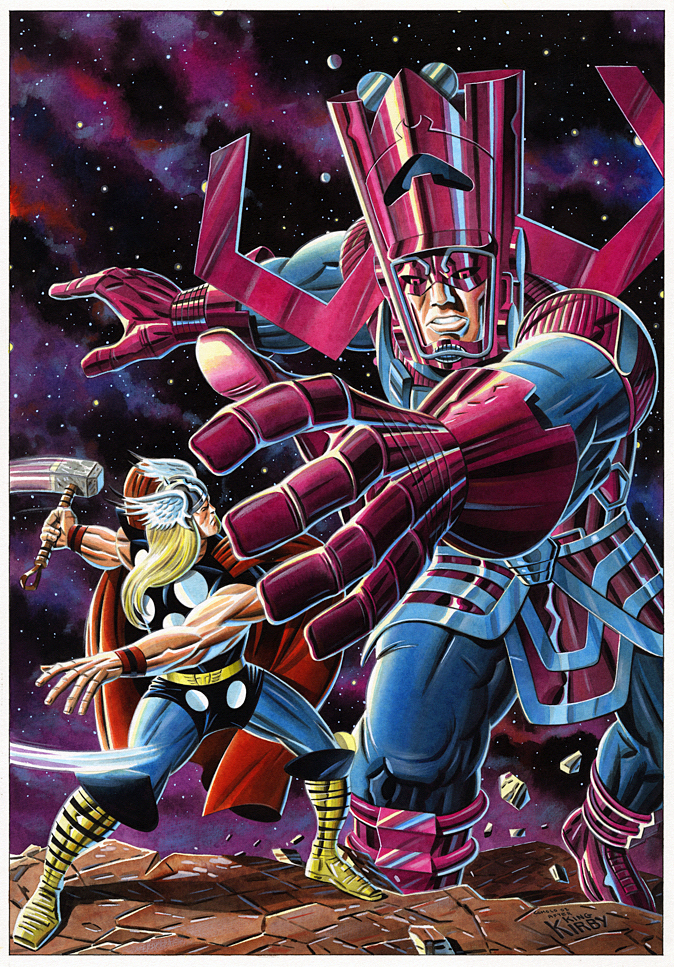
Today wraps our special remembrance to Jack Kirby with a third piece by Giorgio Comolo, an Italian artist who worships the King — and expresses his adoration with unique and lovely homages and recreations.
“It is your understanding I seek — and not your enmity!” —Galactus
Galactus reveals his origin to Thor (and to us) in this story arc, after Thor, at Odin’s insistence, tracks down the planet devourer in the far reaches of the universe.
Kirby is doing some of his wildest Marvel science fiction in these issues — a small hint of what will come just a short time later in his “Fourth World” comic books at DC.
Apparently, Galactus is not a bad guy. Despite the fact that he devours worlds and galaxies, destroys trillions of lives, he’s misunderstood. That’s all.
Uh-huh.
Comolo homages the cool Kirby cover image and fleshes out the background with cosmic details. And again, he employs that very specific neon-like palate. He also makes Thor’s face a bit more visible — a nice touch. (Although he keeps Thor’s somewhat wonky hand from Jack’s original.)
Oh, and he gives Galactus pants and full sleeves. Galactus should always have pants and full sleeves.
No one has (yet) published a book –or even a portfolio — of Comolo’s Kirby homages. I hope that is rectified in the near future.
Or hey, at a minimum, how about celebrating the 60th anniversary of the Fantastic Four next year by doing Kirby cover homages all year long. Who wouldn’t want to contribute to that?
Meanwhile, Thor #168 itself?:
Kirby. Thor. Odin. Galactus. The Watcher. Balder. The Warriors Three. The Thermal Man…
A pretty good deal at 15 cents.
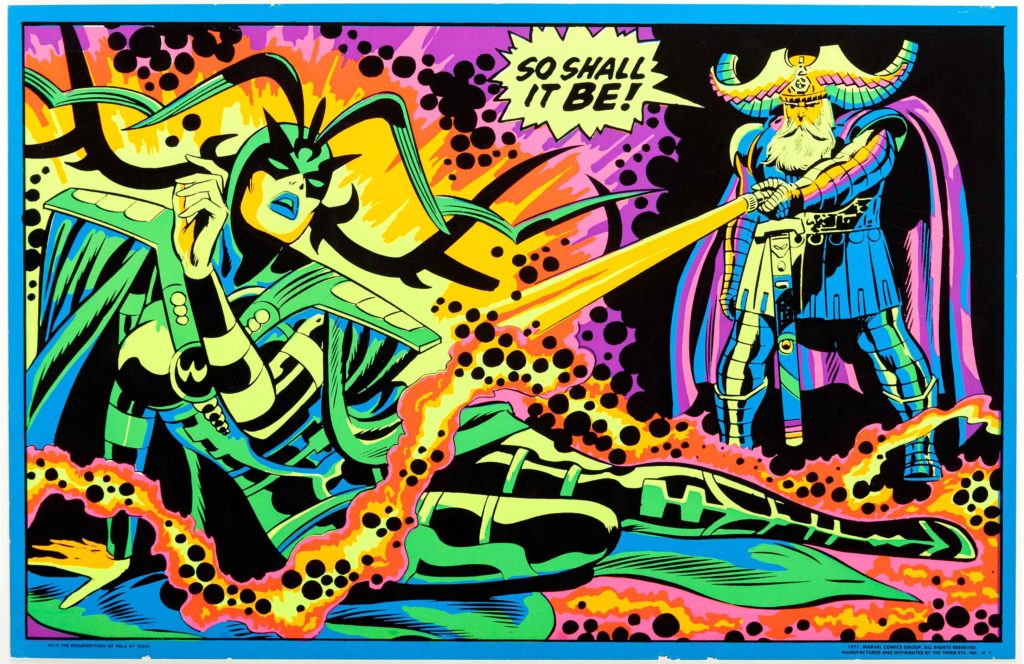
Giorgio Comolo — Clash Of The Titans
Fantastic Four #73 (April 1968) Re-creation, 2008
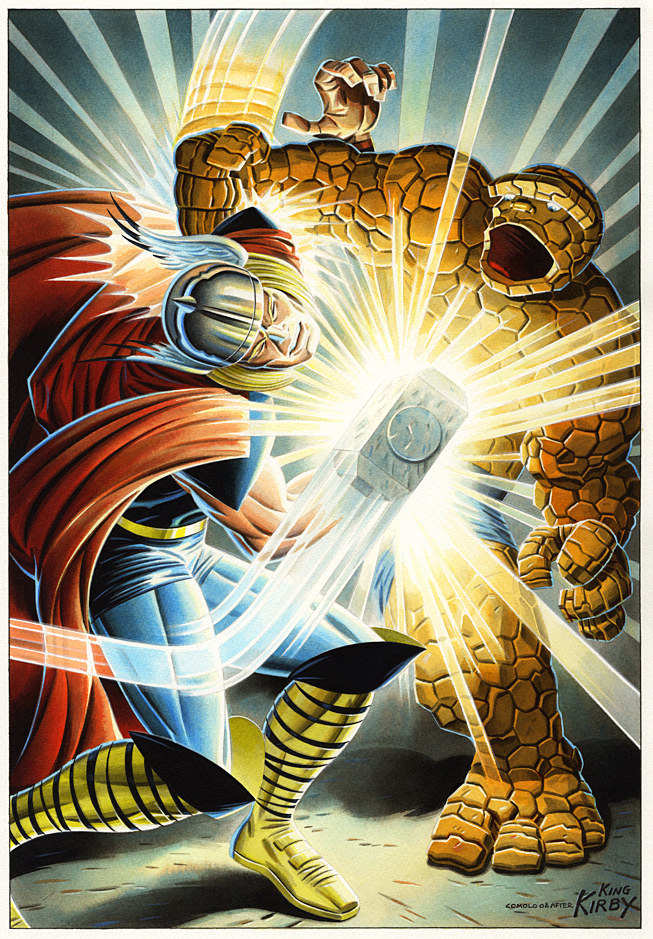
We continue to remember Jack Kirby with the help of Giorgio Comolo, an Italian artist who worships the King — and expresses his adoration with unique and lovely homages and recreations.
Thor vs. Thing? Come on, no contest. The Thing is powerful, but Thor is a GOD, right?
In this one-off issue of Fantastic Four (#73), Thor (with diminished powers) helps Spider-Man, who in turn is helping Daredevil, who recently had a mind transference with Doctor Doom who… never mind. The FF think Daredevil is still Doc Doom. Chaos ensues. Read the comic yourself and catch back up with us later.
Pretty much the entire issue is a battle royale, and Comolo captures the power of this terrific Kirby splash with his own specific style and palate.
Good thing Thor is having power problems… or Thing would be a pile of rocks on the next page.
Also, FYI, in this issue Thing calls Thor “Curly” “Goldilocks” and “Cornball” at various times, and Spider-Man calls him an “Asgardian Hippie.” I know that was Stan’s style, but we are perilously close to Not Brand Echh territory at this point.
Fortunately for us, Galactus and the Silver Surfer return in the next issue. More operatic than comedy.
Giorgio Comolo — In The King’s Court
Fantastic Four #77 (August 1968), Cover Re-creation, 2008
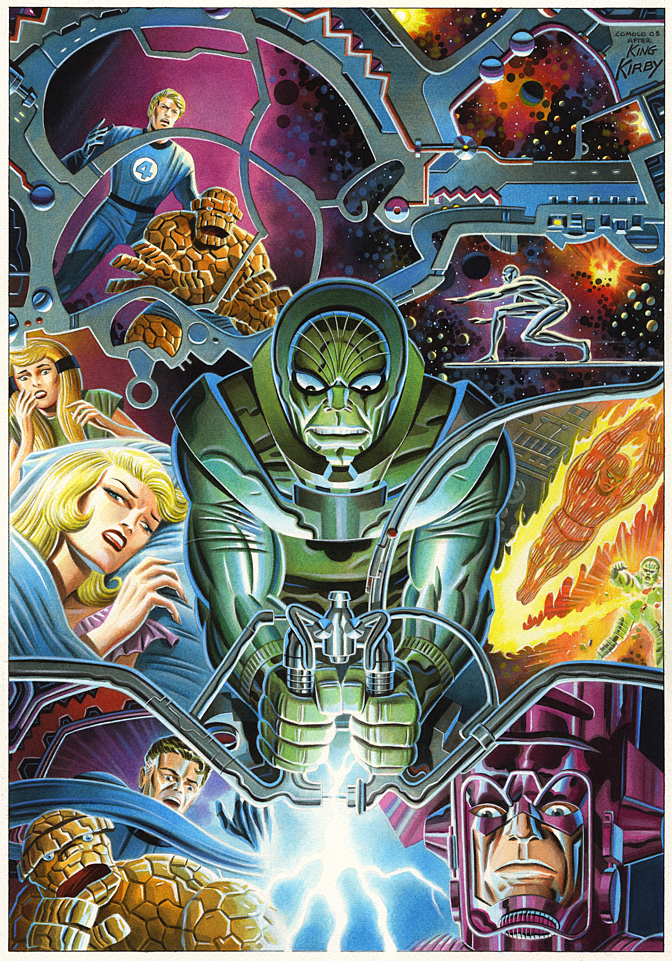
This week we remember Jack Kirby with an artist who worships the King — and expresses his adoration with unique and lovely homages and recreations.
Giorgio Comolo speaks no English. None. Niente.
That makes speaking to him about his art challenging if, like me, you don’t speak Italian. (I don’t include the handful of words I learned in my childhood neighborhood. Those are not very useful for polite conversation.)
Thankfully, his brother speaks some, and his sister-in-law a bit more, so roughly translated, I was able to tell him last year how much I enjoy his work when I met the whole family in Italy.
And fortunately, King Kirby is a universal language, and Comolo speaks Kirby fluently. The Italian artist recreates many Kirby covers and scenes as paintings, using a specific palate that utilizes cooler color tones and hues. It might be a stretch to some, but his cosmic paintings often remind me of those wild blacklight posters published in 1971 by a long defunct company called Third Eye.
Of course Comolo’s paintings are not Day-Glo — but they definitely pop. His palette creates a very distinctive look to his homages.
And he focuses on Jack’s later works at Marvel (and some of the Fourth World material at DC), so there’s plenty of cosmic material to work with.
Like this cover recreation of FF 77. It’s a trippy composition to begin with, and in Comolo’s hands, becomes… even trippier.


